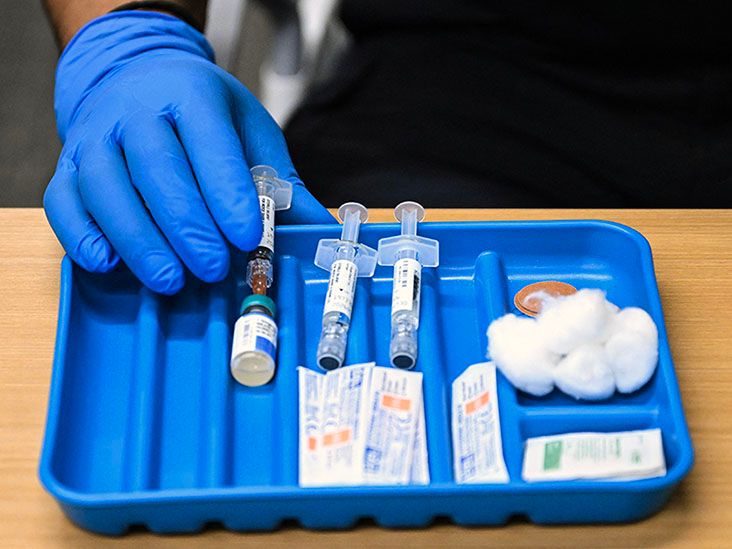Medicare covers medications, surgery, and specific ultrasound treatments that doctors commonly use to treat those with Parkinson’s disease.
Parkinson’s disease is a brain degenerative disease that starts developing when cells die or become damaged in the part of the brain that makes dopamine, a chemical the body needs for smooth, purposeful movements. Symptoms usually appear slowly and become worse over time.
Doctors diagnose approximately 90,000 people in the United States with Parkinson’s disease every year, according to the Parkinson’s Foundation. The disease is a motor system disorder that causes uncontrollable movements.
Original Medicare’s Part A covers inpatient surgeries, and Part B covers outpatient procedures, lab tests, and doctor visits. Individuals can add Part D for prescription drugs. Alternatively, Medicare Advantage combines Parts A and B and often includes drug coverage.
This article examines the coverage of Parkinson’s disease in each part of Medicare. It then describes the disorder and discusses treatment options and support resources.
Glossary of Medicare terms
- Out-of-pocket cost: This is the amount a person must pay for care when Medicare does not pay the total amount or offer coverage. Costs can include deductibles, coinsurance, copayments, and premiums.
- Premium: This is the amount of money someone pays each month for Medicare coverage.
- Deductible: This is an annual amount a person must spend out of pocket within a certain period before Medicare starts to fund their treatments.
- Coinsurance: This is the percentage of treatment costs that a person must self-fund. For Medicare Part B, coinsurance is 20%.
- Copayment: This is a fixed dollar amount a person with insurance pays when receiving certain treatments. For Medicare, this usually applies to prescription drugs.
According to the Parkinson’s Foundation, Medicare coversdrugs and surgical treatmentfor the disease.
In addition, Medicare covers a noninvasive surgical procedure called unilateral focused ultrasound thalamotomy, which could help those who have tremor-dominant Parkinson’s Disease.
Below, we look at the coverage details of each part of Medicare.
Original Medicare
Original Medicare consists of Part A, hospitalization insurance, and Part B, medical insurance.
Part A
Part A coverage for Parkinson’s disease may include:
- inpatient surgeries or treatment
- home healthcare, including physical, occupational therapy, and speech therapy
- skilled nursing facility care for a limited time
There are out-of-pocket costs for Part A, such as the 2025 $1,676 deductible for each benefit period.
A benefit period begins the day a person enters a hospital and ends on the 61st day of being at home.
There is a $0 copayment for the first 60 days a person is in the hospital. A $419 copayment applies for days 61–90 in each benefit period.
Part B
- lab tests and other diagnostic tests, such as X-rays
- outpatient surgeries
- doctor visits
- medical equipment, such as wheelchairs and canes
- injectable medications
- some home healthcare
Part B out-of-pocket costs for 2025 include:
- $185 Part B monthly premium
- $257 annual deductible
- 20% coinsurance
Medicare Advantage
Private insurance companies offer Part C, also known as Medicare Advantage.
These plans provide the same inpatient and outpatient coverage of parts A and B for Parkinson’s disease treatment.
Many plans also offer prescription drug coverage. A person with a Medicare Advantage plan usually has lower costs if they choose in-network doctors and hospitals.
The costs of Medicare Advantage plans vary, including deductibles, copayments, coinsurance, and monthly premiums.
The plans put an annual cap on expenses, beyond which a person pays nothing for eligible care.
Medicare Part D
Private insurance companies also offer Medicare Part D, known as a prescription drug plan (PDP).
A person with Original Medicare may purchase a PDP, which includes coverage of common medications a doctor prescribes for Parkinson’s disease.
Because medications are a primary treatment method, it is important for a person with the disease to have a PDP.
Part D costs include deductibles, copayments, coinsurance, and monthly premiums. These costs differ among plans.
Medigap
An individual with Original Medicare may buy a Medigap plan, which is also known as Medicare supplement insurance.
The plans vary in coverage, but they help pay up to 100% of out-of-pocket costs associated with parts A and B, including those related to Parkinson’s disease.
Costs of Medigap plans include the monthly premiums.
Parkinson’s disease is a serious disorder with debilitating effects.
A person who has received this diagnosis may contact the Parkinson’s Foundation for help in navigating all aspects of the disease.
The foundation provides a wealth of educational material on the latest research and an online community that offers emotional support.
To contact the foundation, a person can call 1-800-473-4636 or contact them by email at helpline@parkinson.org.
Parkinson’s disease is a progressive disorder that produces both motor and non-motor symptoms. Although there is currently no known cure, treatment can help dramatically.
Original Medicare, which consists of parts A and B, and Medicare Advantage cover treatment for the disease.
Parts A and B do not include prescription drug coverage. Because medication can make a big difference for those with Parkinson’s disease, a person with Original Medicare may wish to have a Part D prescription drug plan.
Most Medicare Advantage plans include prescription drug coverage.
Before a person buys a Medicare Advantage plan or Part D plan, they may like to compare the costs of available plans as these can vary considerably.
“”


